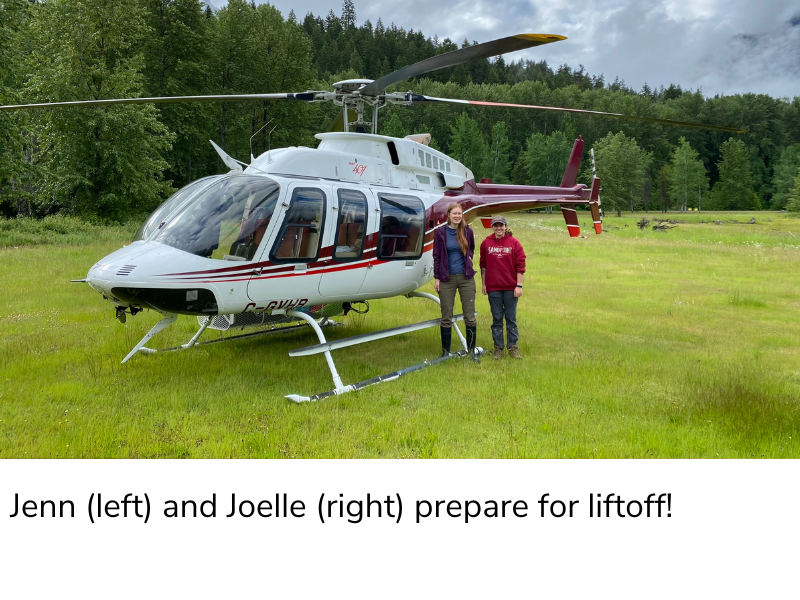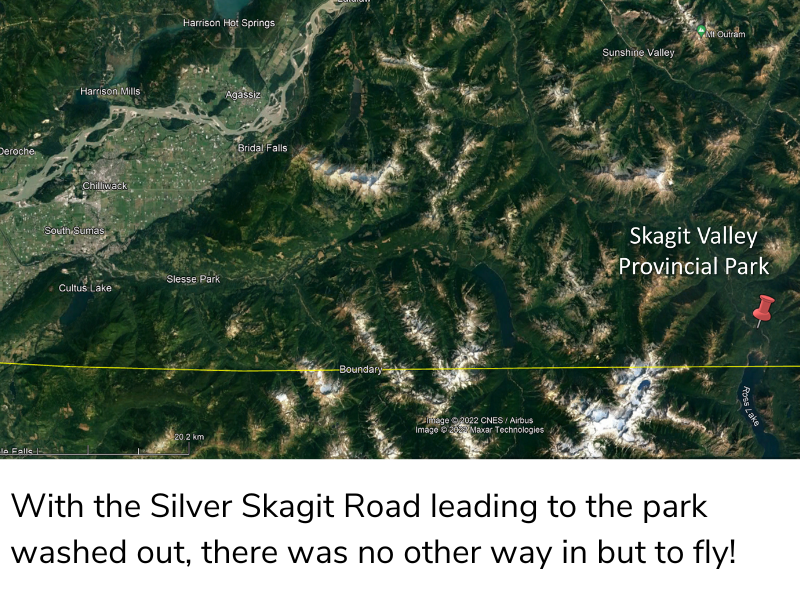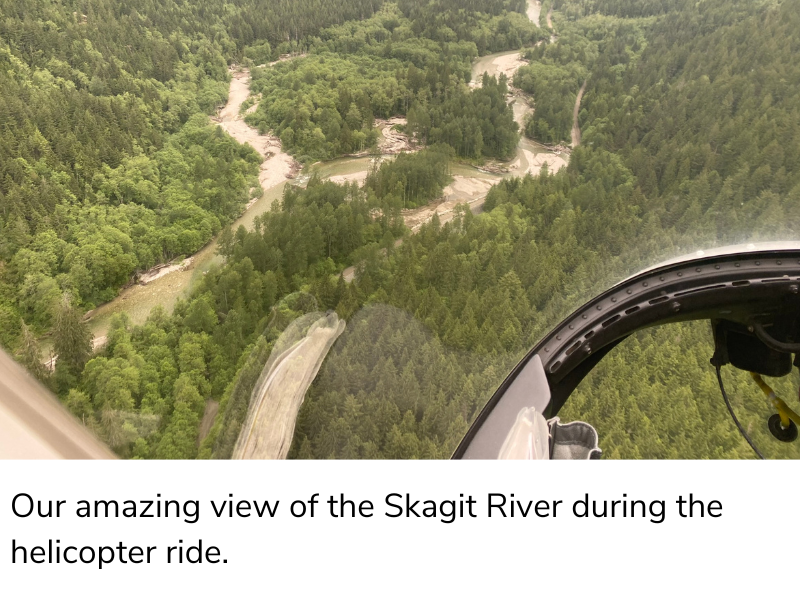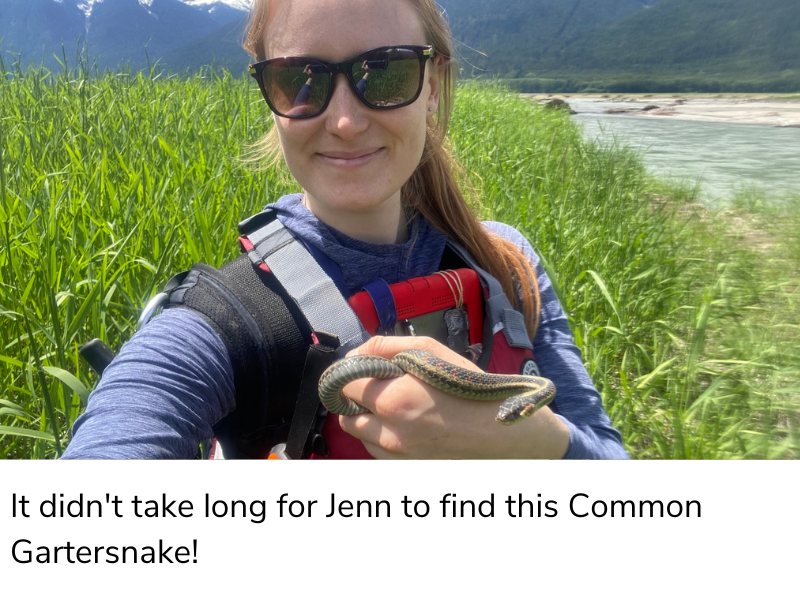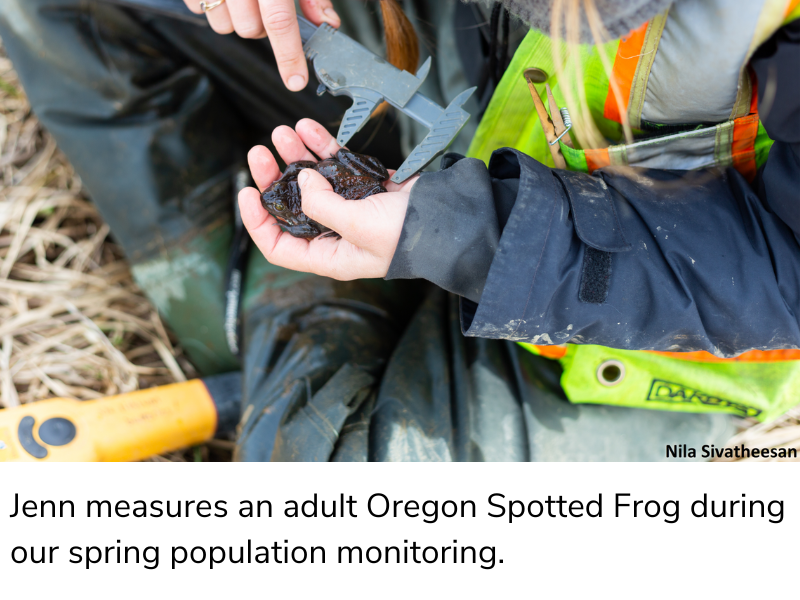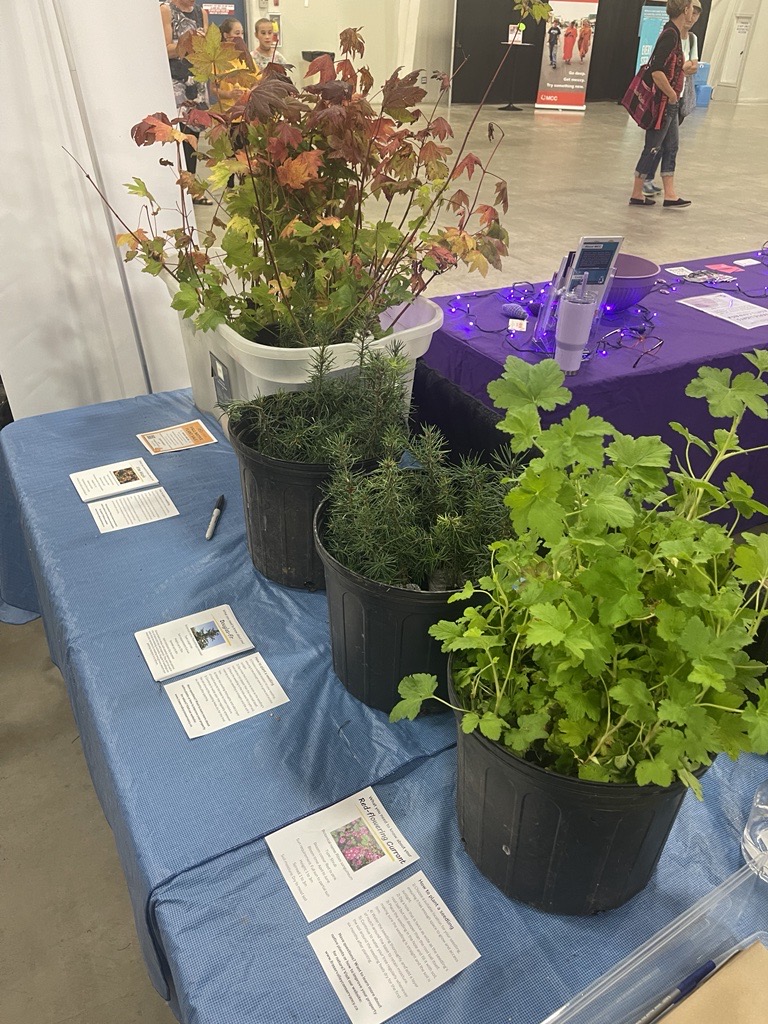A New Wetland
One week later, we headed out to our second site, a wetland just north of Ross Lake. This time, the helicopter touched down in a meadow and we had to bush-wack through the forest to get to the wetland. Without any paddle boards, the walk to get to the site was much easier than at Ross Lake, but when we got to the wetland the water was a lot deeper than expected.
We walked along the edges of the wetland, assessing the habitat, taking notes about the vegetation, and finding frogs! We saw so many Western Toads at this site, of all life stages. We found adults, juveniles, and even a tadpole. The toads at this site also seemed a little further along development-wise when we compared them to their Ross Lake counterparts.
